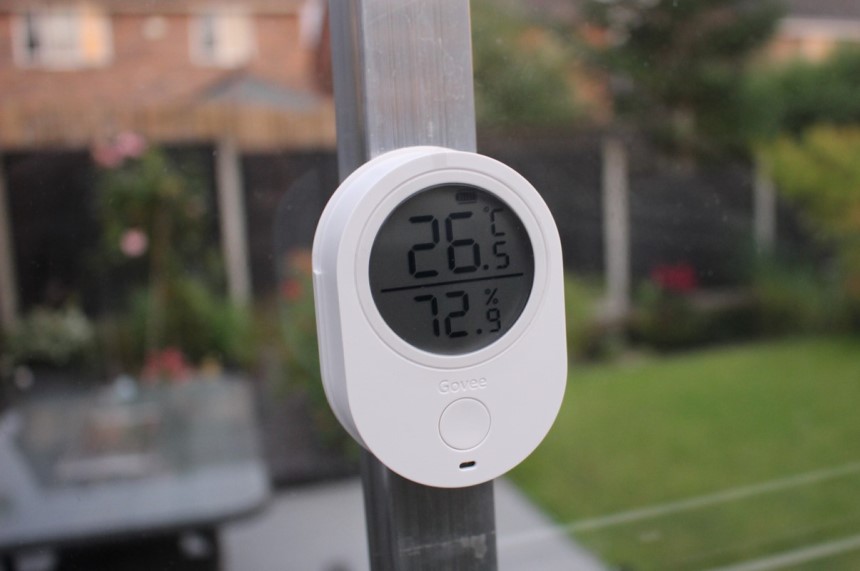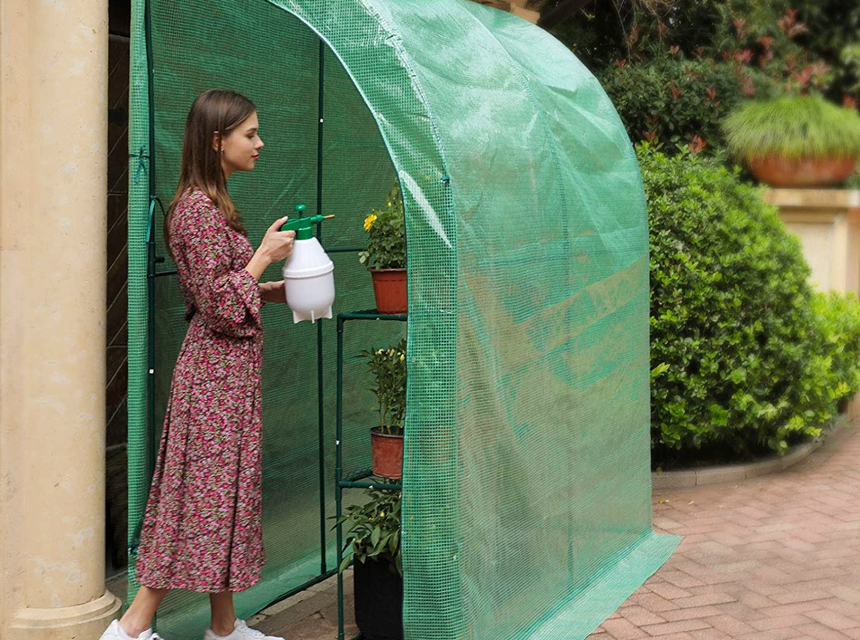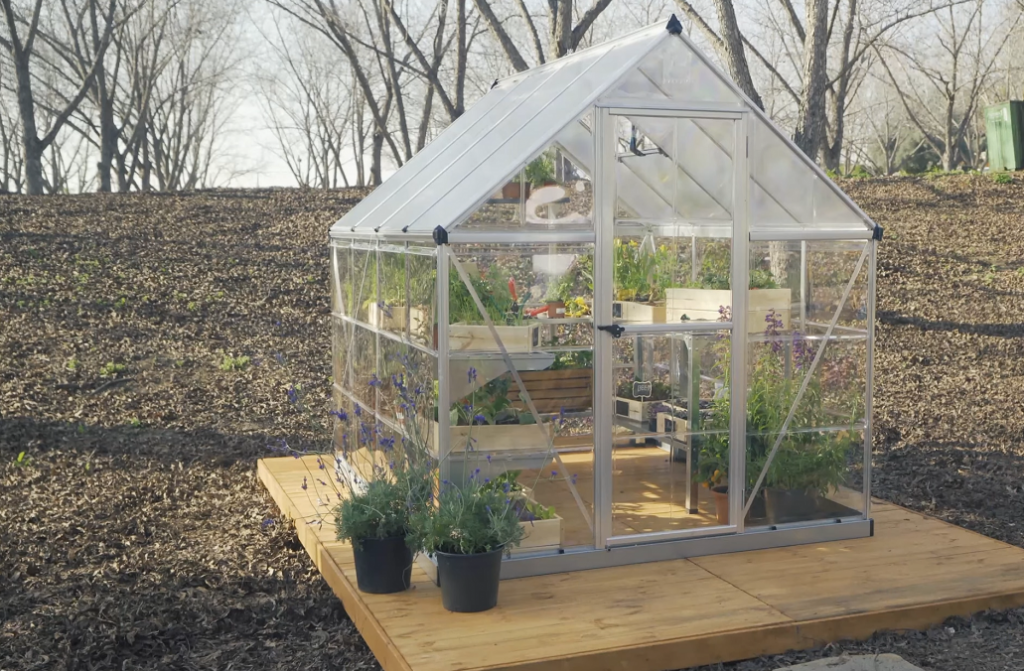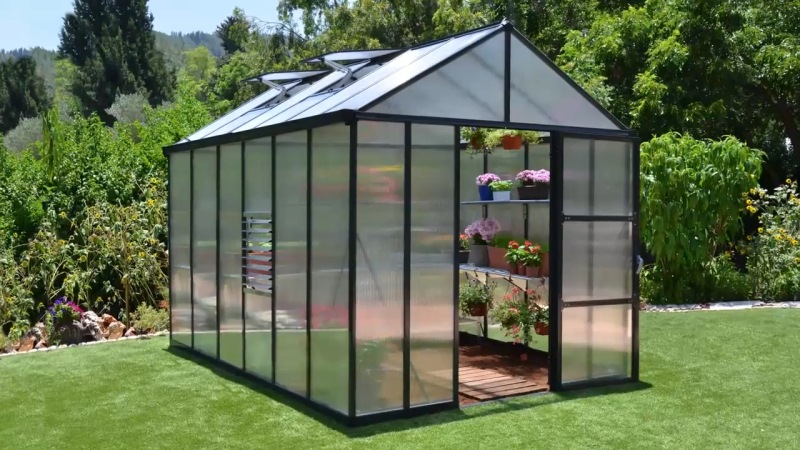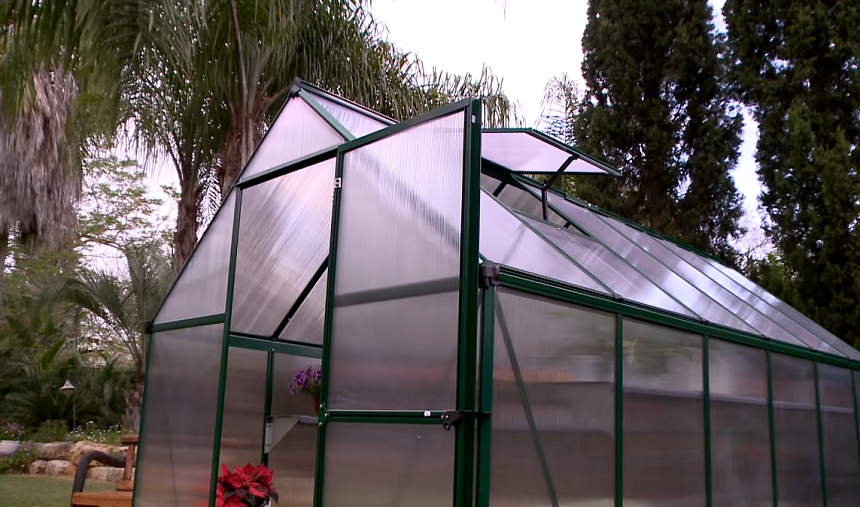
Are you a gardener who has had to toss out plants due to frost and pests? If the answer is yes, you should consider investing in a greenhouse. A greenhouse is a structure with a wall and a roof that regulates climate conditions for plants and vegetables. Since you are going to buy a greenhouse, there are a lot of factors you need to consider. Most importantly, what are the different types of greenhouse sizes, and what are their benefits? Greenhouses come in three different sizes: small, medium, and large. This post will explain the difference between greenhouse sizes and the pros and cons of each.
There isn’t technically an average size when it comes to greenhouses. What size greenhouse you may need depends on you! What type of yard you have and your garden’s aesthetic factors into what greenhouse will work best for you. Hobby greenhouses can range from 6’x4′ to 10’x20′. 8’x10′ greenhouses are the closest greenhouses to average size.
A seven-foot-high greenhouse is a good size greenhouse because there is standing room. The higher the greenhouse, though, means more heat since heat rises. With a 6’x8′ greenhouse, you will be able to put shelves on both sides. Most gardeners think the bigger the greenhouse, the better, but that is not always the case.
When buying a greenhouse, you want to make sure you buy the best possible greenhouse for your gardening needs. The factors to consider when looking for the best size greenhouse are:
An essential component in regards to greenhouses is ventilation. Ventilation helps regulate the temperature of the greenhouse. Ventilation allows heat to escape meaning there is less chance of your plants wilting and dying. Poor ventilation can make plants sick, and when plants are sick, they attract bugs. Bugs like stagnant air and air in a greenhouse can become stuffy without ventilation. Greenhouse vents allow fresh air to move throughout the entire greenhouse. Thus, making sure there is good airflow.
Insulation is used to keep plants warm on those cold winter evenings. Without insulation, plants will not grow properly. A good and affordable idea for insulation is bubble wrap. Bubble wrap is a cost-effective and efficient way to insulate your greenhouse.
Panel clarity matters because it affects how much sunlight your plants receive. It is recommended that you use clear plastic or glass to panel your greenhouse. If you use colored panels, the amount of sun your plants receive will be affected. Opaque panels are better for balanced plant growth. It disperses light equally, so all plants receive their equal share. Opaque panels are great for year-round use. Even with clear panels, it is still recommended to use a grow light.
Since most gardeners think the bigger greenhouses are the better choice, many overlook the benefits of a small greenhouse. A small greenhouse can keep your plants and vegetables safe from critters like rabbits and insects. Another reason small greenhouses are great is that you will grow your vegetables Trusted Source Gardeners use row covers to extend the growing season into the winter months - The Washington Post Row covers have helped a Canadian gardening expert realize her goal of a year-round supply of homegrown produce. www.washingtonpost.com all year round. Growing vegetables all year round will also save you money on groceries. Small greenhouses come in various sizes, like the 6’x8′ and mini greenhouse.
6’x8′ greenhouses are the budget-friendly but efficient option for greenhouses. The 6’x8′ greenhouse is the most popular size of a greenhouse on the market. They are perfect and spacious, with enough space for shelves and a workbench.
Aluminum is the most popular material for a 6’x8′ greenhouse.
The Mini Walk-in Greenhouse from Nova Microdermabrasion is made with high-quality metal with a powder coating. 6’x8’ greenhouses come in many different styles fitting in with the aesthetic of your backyard Trusted Source Bringing the outside in: Architects build spectacular worlds under glass And in downtown Seattle, Washington, Amazon is constructing three glass spheres as the centerpiece for its new headquarters. Also set to open in 2018, they plan to use nature to inspire their workers, with treehouse meeting areas and around 3,000 species of plants contained in these structures. www.cnn.com . Once you have a greenhouse in your backyard, you will become very popular. All of your friends will want to stop by to admire your beautiful garden. No matter the size, humans are constantly amazed by nature.
Mini greenhouses are perfect for beginning gardeners. They also work for those who may not have space for a bigger greenhouse in their yard. Mini greenhouses are the smallest type of greenhouse on the market. It has a cover to protect your plants from the elements, and it is portable. Because it is portable, you can move the mini greenhouse into sunny spots. They are space-saving, cost-effective, and mobile. Pop up Greenhouse Mini Greenhouse for Indoor Outdoor by Tingyuan is a perfect example of an efficient and affordable mini greenhouse. If you are a beginner gardener using a mini-greenhouse, getting yourself a greenhouse kit would benefit your garden.
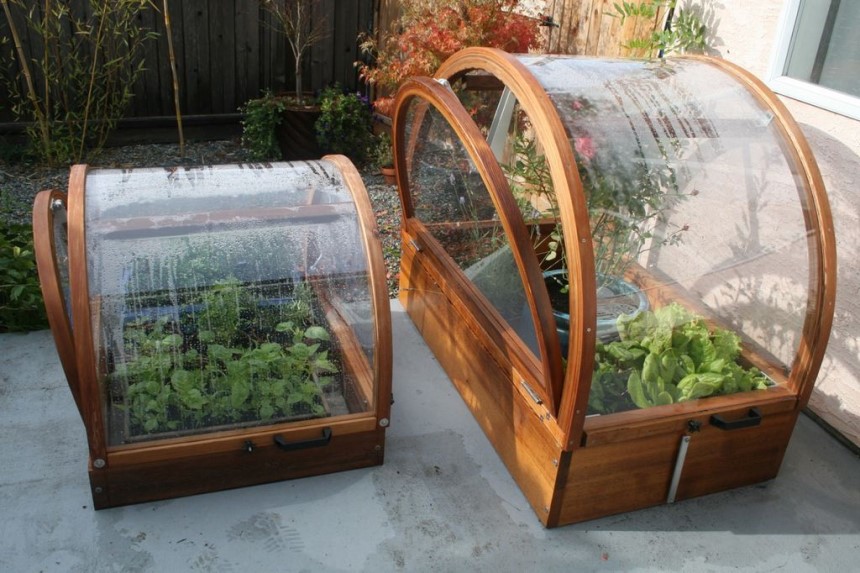
Medium greenhouses will have you feeling like a professional gardener. Well, a semi-professional one. The average size for a medium greenhouse is approximately 8’x12′. The Greenhouse for Outdoors with Observation Windows by Ohuhu is a portable medium greenhouse but still has ample space.
Medium greenhouses provide excellent air circulation. Most have UV-resistant covers. Medium greenhouses are great for those who want to start small but eventually grow their garden. Medium greenhouses are walk-in indoor greenhouses.
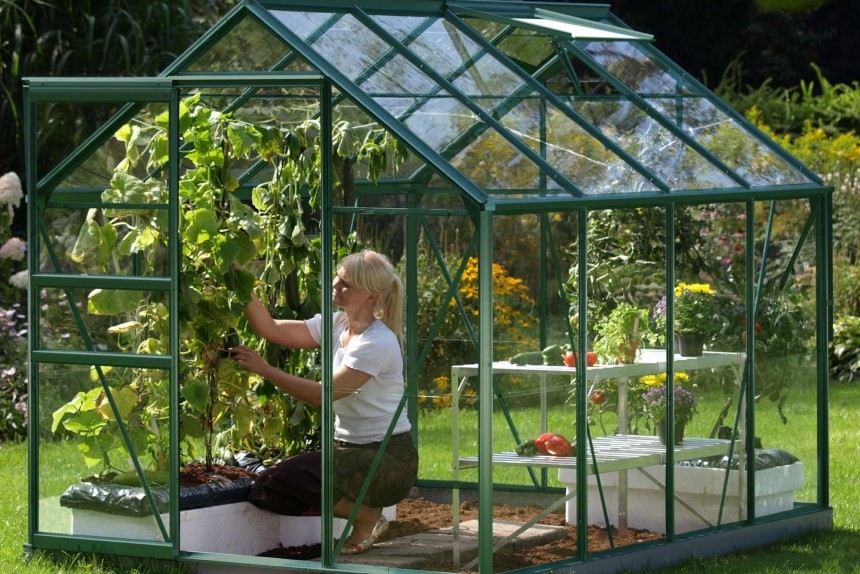
Because it is so big, you will need to have a large outdoor area to put it in. Unlike small and medium greenhouses, large greenhouses can be time-consuming. The world's largest greenhouse Trusted Source Designs unveiled for the world's largest single-domed greenhouse Designs will be on display from May 22 to November 21 at the 17th Venice Architecture Biennale, where Coldefy and interdisciplinary not-for-profit Zuecca Projects will showcase architectural models, sketches and videos detailing the grand plans for the dome. www.cnn.com measures 20,000 square meters.
Despite being large, many bigger greenhouses are easy to install, such as the Hot Green House 12’X7’X7′ Larger Walk in Outdoor Plant Gardening Greenhouse Plant Protector by BenefitUSA. Large greenhouses provide sufficient space to add in multiple benches and shelves. It is also perfect for tall plants.
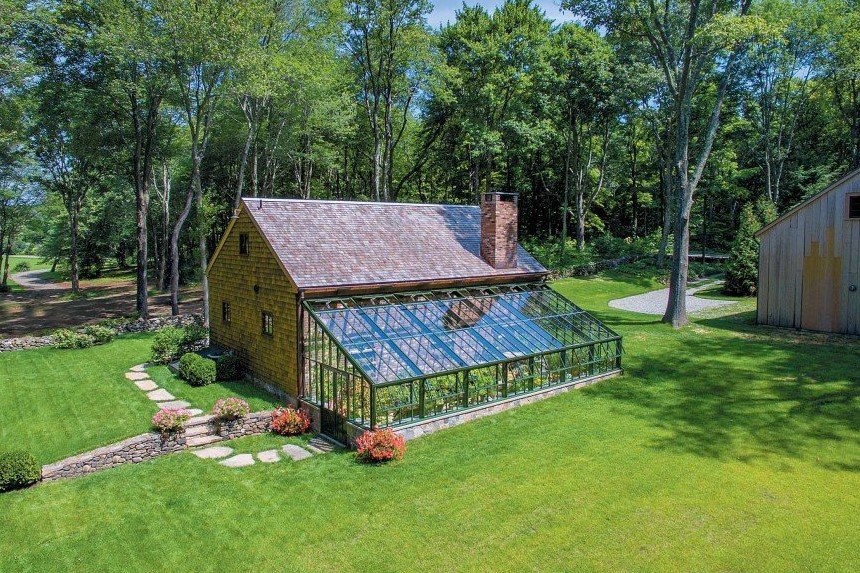
Do you need to heat a greenhouse?
Depending on the plants you have in your greenhouse, you may need a heater. A greenhouse works by trapping the heat and energy from the sun and using them to help the plants grow. Some plants do require extra heat, such as potatoes, winter lettuce, and cabbage.
Is a 6’x4’ greenhouse big enough for my needs?
The 6’x4′ greenhouse is a great size greenhouse for your needs. Since it is six feet tall, there is plenty of room to stand as well as having the benefit of a full-size door.
What are the five types of greenhouses?
The five types of greenhouses are:
Are taller greenhouses better?
Taller greenhouses don’t necessarily mean they are better. Taller greenhouses do cast fewer shadows on crops as well as allow for more standing space.
What type of roof do I need for my greenhouse?
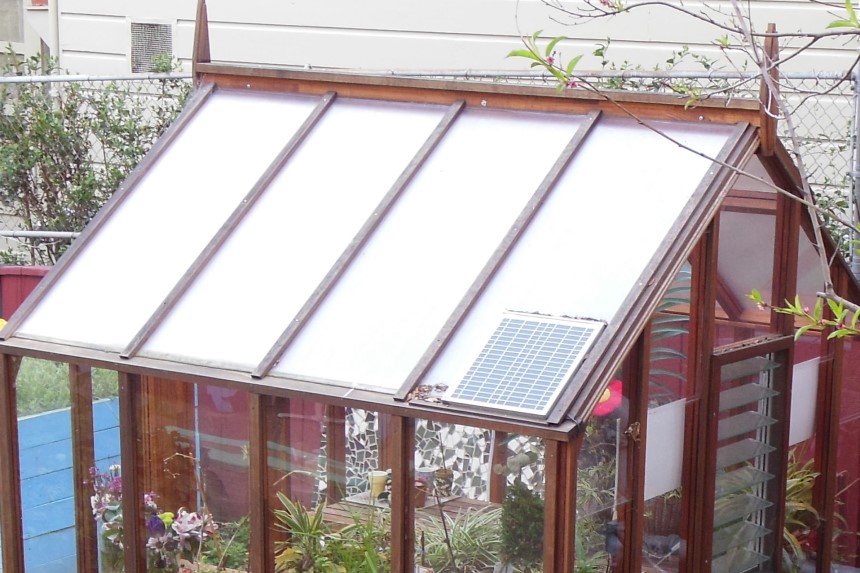
Each of these materials comes with its own pros and cons, although the most popular material for a greenhouse roof is glass.
It can be difficult choosing what greenhouse works best for your gardening needs. A mini greenhouse is perfect for someone who doesn’t have enough space for a medium-sized greenhouse in their yard. It is also ideal for beginning gardeners as it does not require much time. If you are a more skilled gardener but are still hesitant to invest in a larger structure, then you should invest in a medium greenhouse. A larger greenhouse will suit the needs of an experienced gardener. Some larger structures are so spacious they have room for a seating area.
